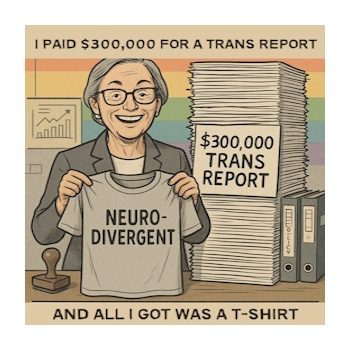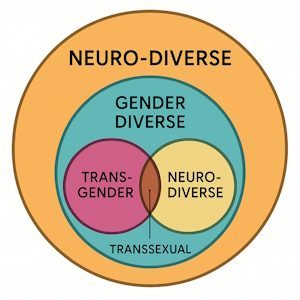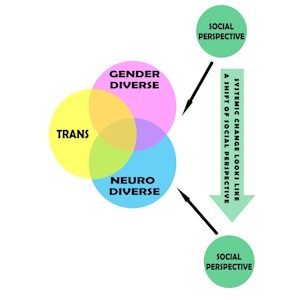The Role of Trauma in Marginalization and Colonization
Trauma plays a profound role in shaping the experiences of both neurodiverse and gender diverse communities. Regardless of the specific labels we use—be it transgender, transsexual, gender diverse, or neurodiverse—many individuals within these groups face heightened exposure to trauma, often as a result of systemic marginalization.
A systematic review published in MDPI (2025) highlights that gender-diverse populations are at significantly higher risk of experiencing adverse childhood experiences (ACEs), including abuse and social stigma. These traumatic experiences are strongly associated with increased rates of depression, anxiety, suicidality, and other mental health challenges. The review emphasizes the importance of trauma-informed and culturally sensitive care to address these disparities. What is needed now are regional studies within Canada to define evidence-based strategies to address this reality.
Similarly, a critical analysis by 3SC.org (2024) underscores the vulnerability of neurodiverse individuals to trauma. The report notes that neurodiverse people often face unique challenges in processing traumatic events due to sensory sensitivities and communication differences. It also raises concerns about diagnostic overshadowing, where trauma symptoms are misattributed to neurodevelopmental conditions, further complicating access to appropriate care.
These findings point to a broader truth: trauma is not just an individual experience but a systemic tool of marginalization. Historically, colonization has used trauma—through forced assimilation, erasure of identity, and institutional violence—as a means of control. Recognizing trauma as a shared thread in the experiences of neurodiverse and gender diverse individuals allows us to reframe inclusion not just as a matter of identity, but as a matter of healing and justice.
So how do we as marginalized people roll back the tides of trauma inflicted on us by society?



